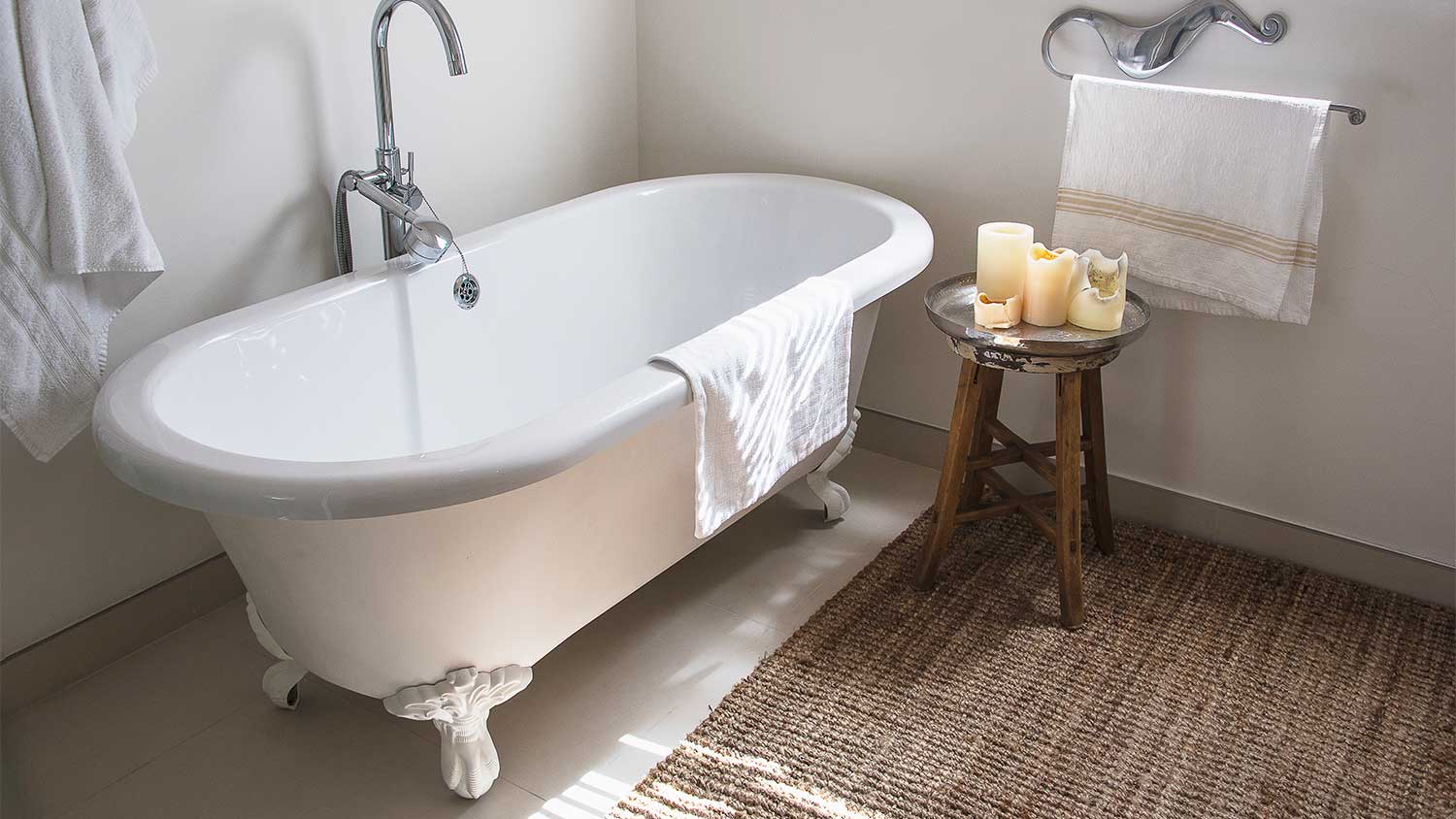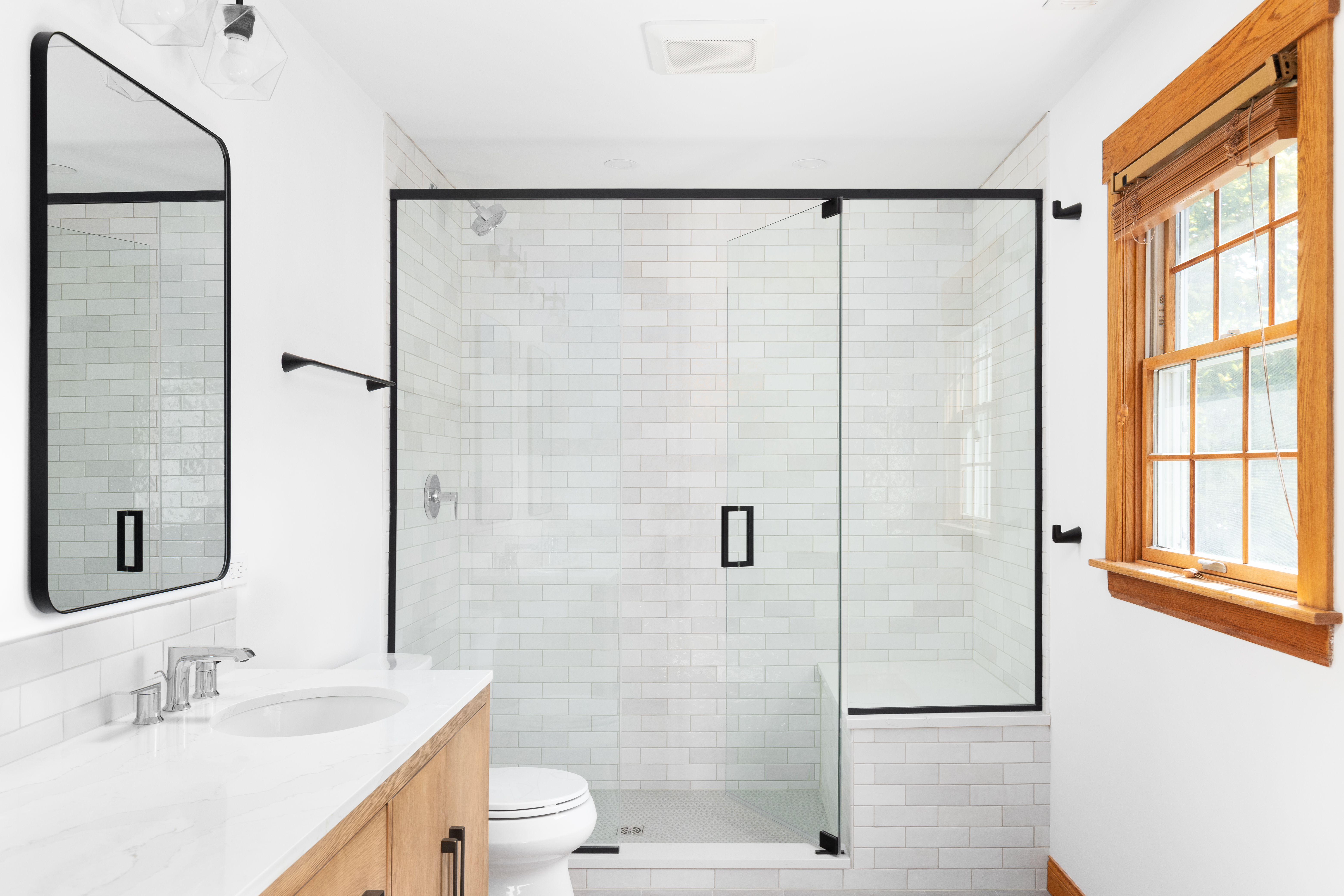
Bathroom cabinet costs can easily skyrocket. Take a look at these important cost factors and considerations to help you stay within your budget.
Replating fixtures can give your bathroom a high-end look


Replating involves removing old plating and applying a new metal sheet over the fixture.
You might want to replate outdated or vintage fixtures to restore them to their former beauty.
Only an experienced pro can get a smooth finish and knows how to handle chemicals.
A replating project can be less expensive than replacing fixtures if you are set on high-end metals.
Replating bathroom fixtures can upgrade any bathroom’s look while helping fixtures last longer. Simply spray-painting high-touch points, like faucets, isn’t as durable as replating, which is not as costly as replacing the fixtures. Here’s everything you need to know about replating, from what it is to how much it costs and how to do it.
Replating, also known as metal plating or electroplating, is wrapping a material in a thin sheet of metal. It involves removing the old plating and replacing it. This is a popular way to refresh worn, older fixtures or replate over an outdated color.
There are various reasons why you might decide to replate bathroom fixtures rather than painting over them or replacing them with something new.
Save money: Replating could be less expensive than buying brand-new fixtures, especially if you’re eyeing high-end metals like copper, if you like the shape of your existing features but don’t love the color.
Durability: Many people enjoy using metallic paint to refresh items, but because bathroom fixtures receive frequent use and are near a lot of moisture, the paint will look worn and dingy fast. Replating the fixtures is a long-term solution.
Restore vintage pieces: Metal replating often breathes new life into vintage items. You might find a stunning vintage faucet at a flea market, but it’s a little worse for wear. Replating can help restore vintage fixtures.
Aesthetics: Maybe you purchased a home and love the shape and functionality of the bathroom fixtures—but they’re chrome when you’re dreaming of a brass and marble bathroom. You can replate the fixtures in brass to match the bathroom aesthetic you want. Speaking with a professional faucet installer can help you know all your options for making your bathroom look new.

There are many options for metal replating, but some can stand up better to moist environments, like bathrooms, than others.
Gold: Gold offers a high-end look in bathrooms. It’s also resistant to oxidation, meaning it’s less likely to rust over time.
Copper: Copper offers a warm, luxurious aesthetic but can form a green patina over time due to air and water exposure. You can opt for blackened copper plating for a vintage look.
Chrome: This metal is one of the best options for bathrooms because it is resistant to rust and looks sleek.
Bronze: Bronze is less resistant to rust compared to many other metal options, so it’s not the best option for bathrooms.
Brass: Because brass is susceptible to corrosion, it’s not ideal for bathrooms either. For a similar look, go for gold.
Tin: Tin plating has many benefits. It’s less expensive to replate than metals like gold, copper, or chrome. It also has a high rust resistance.
Zinc: Zinc coating helps protect fixtures from rusting and is also a cost-effective plating option.
Nickel: A major perk of nickel fixtures is that they hide fingerprints and watermarks without sacrificing style, making nickel plating an excellent choice for bathrooms.
The cost of replating bathroom fixtures ranges from $100 to $500 per fixture, depending on the size and finish.
For a small bathroom sink fixture with chrome plating, you’ll spend closer to $100. Replating a bathtub faucet, which is larger, will average between $300 and $400. For a luxe gold faucet, you’ll spend about $500 per fixture.
If you want everything in the bathroom to match, you could replate the drain or cabinet hardware, but this is less cost-effective than replating larger objects. These smaller pieces can cost about $50 each due to insurance costs and the cost of working with hazardous materials, but replacing these items can be less expensive.
Refreshing your bathroom on a budget? A fresh coat of paint, DIY shelving, or a new faucet are simple and inexpensive ways to improve your aesthetic.
Replating requires strong chemicals, special equipment, electricity, and practice to get a smooth finish. It’s also easier and less expensive on base metals like steel and brass versus common metals like zinc. The following is a brief walk-through of how a pro approaches these projects.
Disassemble and remove the fixture: Carefully remove the fixture from the sink or bathtub.
Inspect the fixture for damage: Replating requires a smooth, blemish-free surface, so it may need to be sanded or buffed.
Remove the old finish: In a well-ventilated area, use a chemical stripper to remove the existing metal plating.
Neutralize the stripping agent: Follow the manufacturer’s instructions to neutralize the stripping agent. Then, wash the fixture in soap and water to remove any remaining stripping agent or debris.
Fill the plating tank with a plating solution: Connect the rectifier to the tank.
Connect the bathroom fixture to the cathode and hang it in the tank: The cathode is the negatively charged electrode.
Put the anode made of the desired plating material into the solution: The anode is the positively charged electrode.
Apply electrical current: Use the rectifier, which converts alternating current into direct current, to apply current. The material on the anode will then dissolve and transfer to the fixture.
Polish: After turning everything off and removing the fixture from the solution, rinse, buff, and polish it until it’s smooth.
While you can buy gold and chrome plating kits that contain a plating tank, anodes made of metal plating, a rectifier, and conductive wire, it’s best to leave this project to the pros. The materials are hazardous, and getting a smooth finish takes practice.
Should you replate or replace your bathroom fixtures? This really depends on your aesthetic preferences and your bathroom remodeling budget.
You can find new bathroom sink faucets for $50 to $100, but keep in mind that these figures are for cost-effective options at the lower end of the price range. And if you love the shape of your bathroom faucet or have a vintage model, spending around $100 to replate it might make more sense.
Sometimes replating means saving a treasured fixture. This process can also save you money, particularly if you’re considering more expensive metal fixtures, like those plated in gold or copper. But other times, replacing your bathroom fixtures can be less expensive than replating, even if you hire a local faucet installer to get your new fixture working.
You have to hire a professional for metal replating. That’s because replating involves hazardous electrical processes and dangerous chemicals unsuitable for a DIY project. The cost of hiring a metal plating professional varies, but it ranges between $100 and $500 per fixture.
Paige Bennett contributed to this piece.
From average costs to expert advice, get all the answers you need to get your job done.

Bathroom cabinet costs can easily skyrocket. Take a look at these important cost factors and considerations to help you stay within your budget.

An updated bathtub can give a bathroom a whole new look. Find out how much it costs to replace a bathtub, including prices by type and labor costs.

The cost to install a window seat depends on several factors, such as materials, labor, and options. Here’s a breakdown of the cost to install a window seat.

An updated bathtub can give a bathroom a whole new look. Find out how much it costs to replace a bathtub in Seattle, WA, including prices by type and labor costs.
.jpg?impolicy=leadImage)
Walk-in showers offer plenty of benefits when compared to standard bathtubs, but are they right for you? Discover the pros and cons of walk-in showers.

If your shower door has been acting up, it’s time to get it back in working order. You can adjust a shower door with some common adjustments.